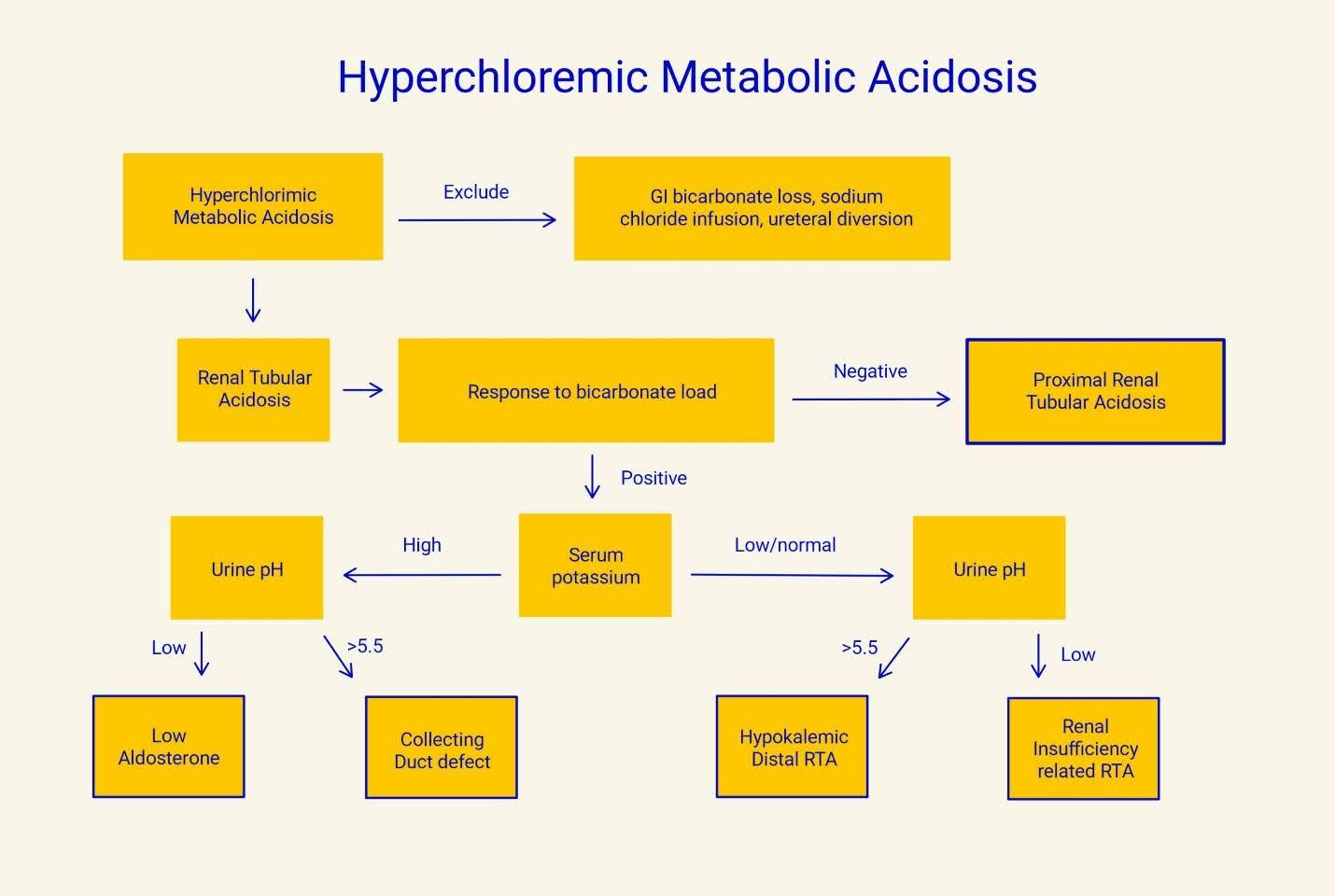Hyperchloremic metabolic acidosis is characterized by a decrease in serum bicarbonate accompanied with an equal increase in serum chloride. This condition may result from bicarbonate loss which exceeds what the kidneys can regenerate via ammonium excretion. It may also result from reduced renal bicarbonate generation, again via ammonium excretion, which is unable to buffer the organic acid load produced from dietary metabolism.
In an outpatient setting, the most common cause of bicarbonate loss is chronic or recurrent diarrhea. This condition can be secondary to a number of conditions, including irritable bowel syndrome (IBS), celiac disease, small intestinal bacterial overgrowth (SIBO), and laxative abuse.
The most common causes of reduced bicarbonate generation by the kidneys are chronic kidney disease and a group of renal tubular ion transfer disorders known to cause renal tubular acidosis. A pathway to distinguish between these renal causes of hyperchloremic acidosis, using common blood and urine tests, is outlined below:





